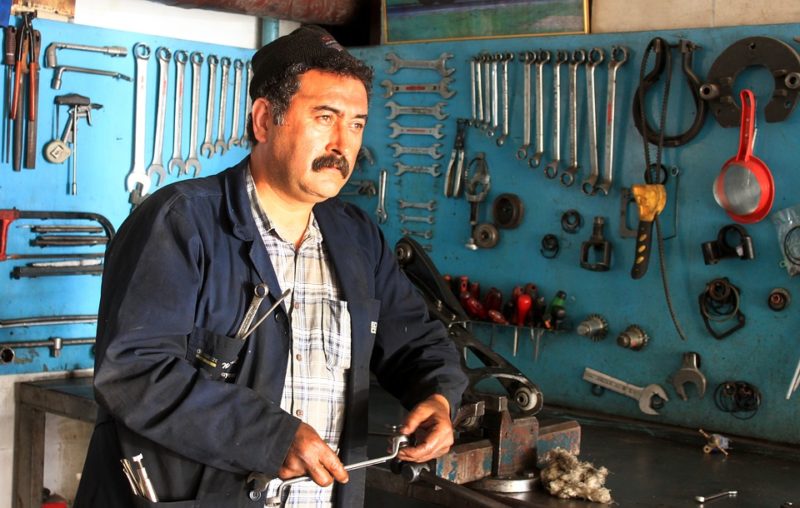Are you searching about how to repair a GE washer? This article will guide you on how you can repair your washer; we’ll focus on the problems and their solutions. All you have to do is to read further.
While some problems are way more severe than others, they are solved quickly with little assistance. We’ve created a list of some of the most basic maintenance errors and malfunctions that frequently occur and that need quick maintenance to get you started. Imagine you clear your washer after a process and discover that your garments are still soaking moisture; this is a typical symptom that your machine isn’t discharging perfectly. Let’s look at a few of the leading causes of drainage problems and what could be done to fix them.

Why And How To Repair Your GE Washer?
So, how to repair a GE washer? Below are the few problems and solutions that will guide you in repairing a GE washer:
Problem #1. Water might not be draining correctly from the washer
There could be many causes why your washer isn’t emptying correctly if there’s enough water in the tub just after the process has finished. It is critical to get to the source of the issue to prevent it at its starting point. Moreover, if your washer breaks right into the middle of a process and the water level refuses to move, you may have to physically drain excess water from your machine.
Solution
Here’s how to go about it. First, unplug the machine switch and remove all the laundry from the washing machine. Then use any bucket to remove the water from the tub and use a cloth to absorb any remaining water. Now, Move the washer away from the wall with caution before you can securely access the back of the washer. Start moving it out as much as possible without pulling on the pipes. Put a bucket beneath the pipe and a few clothes on the ground to grab any leakage. Allow the water to flow by disconnecting the drain nozzle from the wall. It’s best to also know how to fix a washer that wont drain.
Problem #2. Your GE washer might be making noises
The concern with the washer is that it has been perfectly filling, agitating, emptying, and rotating, but it is making a lot of noise. You’ll have to test the following parts unless you figure out which one needs to be replaced to get the washer functioning correctly again. If your GE washer creates a loud noise during the rinse cycle, it is typically due to a faulty part. It may also be a good idea to read about LG washer making loud noise when spinning.
Solution:
Here’s how to identify the issue and decide whether a do-it-yourself or expert repair is required. Sometimes, noise can occur due to a broken belt. For example, the rubber belt might become broken or worn over time. When this happens, your GE washer makes a loud shrieking noise during the rinse cycle. This noise can gradually worsen until the belt snaps and the drum stops spinning entirely. Examine the drive belt for signs of wear, such as extending, holes, or fraying. It is necessary to replace a broken drive belt.
Problem #3. Your washer’s pipe might be leaking
If your washer is starting to leak during the washing or draining process, the drain dispenser has likely failed. Simply put, the drain pump draws water from the laundry tub and tries to push everything out the nozzle hose of your washer. If the pump is broken, water will flow out and fall on the floor of your laundry room.
Solution:
Connect the fresh drain pump’s growing plate to the base of your washer. After installing the drain pump, attach the wire harnesses and the access point and control valve. Check that the hoses are correctly attached and that the clamps securely connect the hoses to the pump valves.
Problem #4. GE washer’s door might be locked
When you shut your washer door, you activate the locking system, allowing your washer to start. Unfortunately, your washer will not proceed if the lock is broken and not switched appropriately or if there is an electrical fault with the lock. Fortunately, trying to replace the lock is a simple process.
Solution:
Start by removing the lock stopper that safeguards the door seal from your washer lock. Put a flat head screwdriver in between the lock and the shield to unscrew the clamp, then thoroughly move the screwdriver around the shield to lighten the clamp. After removing all bolts, lift the other side of the boot covering nearest to the locks. Detach the circuit boards that run towards the door lock once you’ve located them. Next, attach the circuit boards that run to the part with your new lock. Then, place the door lock just behind the panel, with the locking mechanism stretching from the entrance in the front panel.
It’s A Wrap!
By reading the above instructions, you might have learned how to repair a GE washer, but still, If your GE washer stops functioning, you should consult an emergency service center right away. However, if the washer is leaking, you might want to take a breather before calling for assistance. A cracked spin belt, a blocked-up water pipe, or a dead access point can cause a GE washer to close down.
Overheated fuses and power failures are sometimes to blame, which can be repaired easily by the abovementioned steps. Most of these problems can be resolved without the need for outside support, saving you from actually paying an arguably hefty service fee. However, if you do require assistance, don’t be afraid to routine expert maintenance services. It may be helpful to read about GE washer repair guide.
